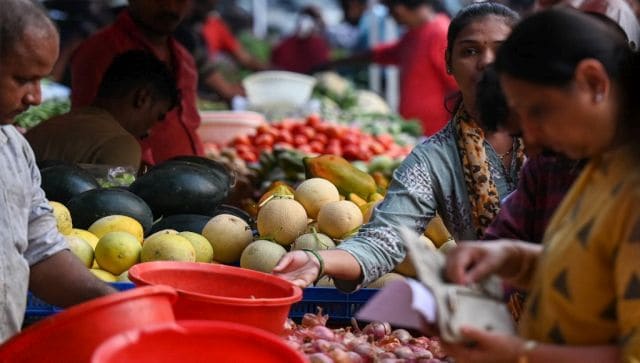Budget 2023: What’s capex, fiscal deficit and non-tax revenue? Your go-to guide to Budget lingo
Some economic terms are hard to understand; some could be confusing. Here’s a handy glossary ahead of Finance Minister Nirmala Sitharaman’s Budget 2023 speech

The fintech sector needs government guidance
It’s the big Budget day. India has a lot to cheer about with the Economic Survey saying that recovery from the pandemic is complete. There are some challenges but the International Monetary Fund (IMF) says the country is a “bright spot” amid global uncertainty.
Today, Finance Minister Nirmala Sitharaman will present the country’s financial statement for the upcoming fiscal year. Terms such as fiscal deficit, revenue receipts, capital expenditure, cess, tax, gross domestic product (GDP) and many more will be the buzzwords of the day. But what do these terms mean?
We break them down for those who are looking to up their economics lingo.
Related Articles
Capital expenditure
Capital expenditure is the money spent by the government on the development of machinery, equipment, building, health facilities, education, etc.
It is the part of the government spending that goes into the creation of assets like schools, colleges, hospitals, roads, bridges, dams, railway lines, airports and seaports. Capital expenditure also covers the acquisition of equipment and machinery by the government, including those for defence purposes. It includes investment by the government that yields profits or dividends in future.
According to Economic Survey 2023, capital expenditure has started pushing private investment and the Budget target of Rs 7.5 lakh crore for the current financial year is likely to be met.
Cess
Cess is an additional levy on the basic tax liability. Governments resort to cess for meeting specific expenditures. For instance, the Swachh Bharat cess is levied by the government for cleanliness activities that it is undertaking across India.
A cess, generally paid by the public, is added to their basic tax liability as part of the total tax paid.
Cess is different from taxes in two aspects: One, it is imposed as an additional tax besides the existing tax. Secondly, the proceeds of a cess may or may not be shared with the state governments while those of taxes have to be shared.
The government imposes different types of cess: Education cess, health cess, fuel cess, clean energy cess and Krishi Kalyan cess.
Current account deficit
When the value of goods and services imported by the country exceeds the value of exports, it is said to be a deficit. The difference between these two values is called current account deficit (CAD). A country’s current account includes both net income (interest and dividends) and transfers (foreign aid).
It is important to keep the current account deficit checked for the currency to remain stable.
The Economic Survey said that India’s current account deficit needs to be closely monitored. The widening of CAD may continue as long as prices remain elevated, however, the country’s economy remains strong, it adds.
If the CAD widens further, the Indian rupee may come under depreciation pressure, it says.
Fiscal deficit
This is the gap between the government’s total spending and the sum of its revenue receipts and non-debt capital receipts. It represents the total amount of borrowed funds required by the government to completely meet its expenditure. The gap is bridged through additional borrowing from the Reserve Bank of India, issuing government securities etc. The fiscal deficit is one of the major contributors to inflation.
The Economic Survey has pegged that the fiscal deficit in the current financial year is likely to moderate top 6.4 per cent of the Gross Domestic Product (GDP). “The fiscal deficit of the government, which reached 9.2 per cent of GDP during the pandemic year FY21, has moderated to 6.7 per cent of GDP in FY22 and is further budgeted to reach 6.4 per cent of GDP in FY23,” according to the survey.

India’s economy is poised to do better in the remainder of this decade, Chief Economic Advisor Anantha Nageswaran said, as the Economic Survey of India was presented on Monday. AFP
Gross Domestic Product
Gross Domestic Product (GDP) is the value of the goods and services produced within the country during a year. GDP is the measure of the country’s economic output. In India, contributions to GDP are largely divided into three sectors: agriculture, industry, and services.
Economists state that the GDP growth rate is the most important indicator of economic health.
India’s GDP growth is expected to slow down to 6-6.8 per cent, the Economic Survey has forecasted. Despite the lower growth forecast for the next fiscal year compared to the current one, the pace would still make India’s growth the fastest among big economies, reports NDTV.
Public debt
Simply put, public debt is the total amount, including total liabilities, borrowed by the government to meet
its development budget.
Public debt can be split into internal (money borrowed within the country) and external (funds borrowed from non-Indian sources). Internal debt comprises treasury bills, market stabilisation schemes, ways and means advance, and securities against small savings.
Inflation
Inflation is the rate at which the cost of products and services has increased in an economy over time. It is expressed in percentages.
In India, there are two main sets of inflation indices to measure changes in price levels — Consumer Price Index (CPI) and Wholesale Price Index (WPI). CPI tracks any shift in retail prices of essential and daily goods and services consumed by households across the country. In short, it captures changes in price level at the consumer level. WPI, on the other hand, is the average change in the price of commodities at the wholesale level. It considers the price of goods traded among corporations, not goods purchased by consumers.

The Reserve Bank of India’s (RBI) projection of retail inflation at 6.8% in the current fiscal is not too high to deter private consumption, according to the Economic Survey. AFP
Disinvestment
When the government sells or liquidates any of its assets or subsidiary (some or all of it), we call it “disinvestment”. It is also called “divestment” or “divestiture”.
Disinvestment helps the government in raising non-tax revenue and to exit loss-making ventures.
Non-tax Revenue
Besides taxes, the government also earns a recurring income, which is called non-tax revenue.
For example, when citizens use services offered by the government, they pay bills, which are categorised as non-tax revenue, as the government provides infrastructure support to implement the services.
Personal income tax
Income tax is what catches everyone’s attention in the Budget speech.
An income tax is a direct tax that a government levies on the income of its citizens. The Income Tax Act, 1961, mandates that the central government collect this tax. The government can change the income slabs and tax rates every year in its Union Budget.
A person’s income tax is dependent on the slab they fall in. The government has created slabs like — up to Rs 2,50,000, Rs 2,50,000-Rs 5,00,000, Rs 5,00,000-Rs 1 crore, and more than Rs 1 crore. The tax is calculated on this basis.
Corporate tax
Corporate tax is a direct tax levied on a company or a corporation on their profits. For this, the company estimates the operating earnings after expenses (like the cost of goods sold (COGS) and revenue depreciation) and pays the enacted tax rates to the government.
Short-term and long-term capital gain tax
Capital gains mean the profit earned by an individual on the sale of his investment in assets such as stocks, real estate, bonds, commodities, etc.
In India, there is a long-term capital gains tax and a short-term capital gains tax. The terms long-term and short-term are defined through the Income Tax Act, 1961. According to the law, a period of one year is long-term for equities and two years for real estate.
PS: Keep this guide handy, as Finance Minister Nirmala Sitharaman gives her Budget speech. You won’t be scratching your heads then.
Budget 2023: The complete coverage
Read all the Latest News, Trending News, Cricket News, Bollywood News,
India News and Entertainment News here. Follow us on Facebook, Twitter and Instagram.
also read

Jayalalithaa's saree was pulled, says Sitharaman: What happened in TN Assembly in 1989?
AIADMK leader J Jayalalithaa was reportedly assaulted and humiliated inside the Tamil Nadu Assembly on 25 March 1989. Invoking this incident in her speech during the no-confidence debate, Union minister Nirmala Sitharaman took potshots at DMK as Kanimozhi remarked on women's safety

'Fighting against each other or together?': Nirmala Sitharaman takes swipe at I.N.D.I.A alliance
"This is an extraordinary unity where it is difficult to understand whether the alliance partners are fighting amongst each other or fighting unitedly," said Sitharaman during no-confidence motion debate in the Lok Sabha

'In UPA's time, promises were bijli ayegi, toilet banega, PM Awas milega... Ab ho gaya': FM Sitharaman in Parliament
From electricity to toilets, the BJP government has fulfilled its promises in the last nine years, Sitharaman said


